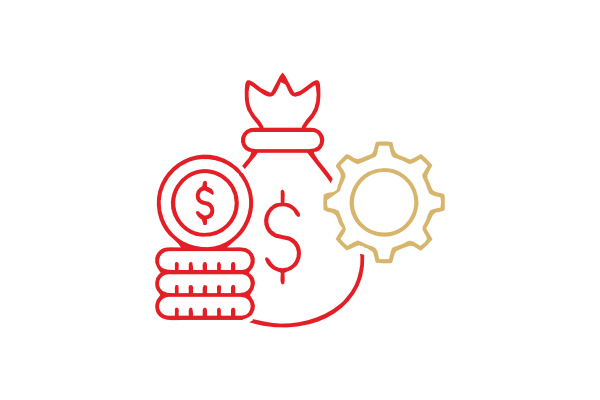
First Home Buyer
A First Home Buyer Loan is designed to help purchase first property that you intend to live in.
- Purpose: It helps individuals or couples purchase their first property by making homeownership more accessible.
- Lower Deposit Requirements: Some loans allow you to buy a home with a smaller deposit, sometimes as low as 5%.
- Interest Rates: Choose between the stability of fixed rates or the potential savings of variable rates.
- Special Loan Packages: Lenders often offer discounted interest rates, reduced fees, or other incentives for first home buyers.
- Government Incentives: You might be eligible for grants, concessions, or exemptions on stamp duty and other fees.

Investment Property Loan
An Investment Property Loan is a mortgage used to purchase a property that you intend to rent out or sell for a profit.
- Purpose: To buy an income-generating property, such as residential or commercial property.
- Interest Rates: Typically, higher than owner-occupied loans due to the increased risk for lenders.
- Loan Features: Often includes options for interest-only repayments, offset accounts, and the ability to make extra repayments.
- Rental Income: The rental income can be used to cover loan repayments, but it’s important to have a buffer in case of vacancies.

Refinance Home Loan
This loan helps in replacing your existing mortgage with a new one, often to secure better terms, such as a lower interest rate, reduced fees, or different loan features.
- Interest Rates: To take advantage of lower rates available in the market.
- Debt Consolidation: To combine multiple debts into one loan with a lower interest rate.
- Access Equity: To access the equity in your home for renovations, investments, or other expenses.
- Change Loan Features: To switch to a loan with better features, such as offset accounts, flexible repayment options or lower repayments.
- Risks: There may potentially be exit cost on existing loan. Refinancing attracts possible application fees, valuation fees or any other fees.

SMSF Loan (Self-Managed Super fund)
A Self-Managed Super Fund (SMSF) Loan, also known as a Limited Recourse Borrowing Arrangement (LRBA), allows your SMSF fund to borrow money to purchase an investment property.
- Purpose: Invest in residential or commercial property using your super fund.
- Loan Amount: Usually, up to 80% of the property value.
- Returns: Any rental income or capital gains are reinvested into the super fund to help repay the loan and grow your retirement savings.
- Requirements: Strict regulations and documentation, including a trust deed and financial statements.

Bridging Loan
A Bridging Loan is a short-term loan designed to help you purchase a new property before selling your existing one. Here’s how it works:
- Purpose: It covers the gap between buying your new home and selling your current one.
- Term: Typically lasts for 6 to 12 months.
- Interest: You’ll pay interest on both your existing mortgage and the bridging loan until your old property sells.
- Risk: If you can’t sell your old home within the term, you might face higher interest rates or need to extend the loan.

Debt Consolidation Loan
A Debt Consolidation Loan is a personal loan used to combine multiple debts into a single loan with one monthly repayment.
- Repayments: Instead of multiple payments, you make just one.
- Interest Rates: Often comes with a lower interest rate than your existing debts, potentially saving you money.
- Budgeting: Easier to manage your finances with a single repayment.
- Pay Off Debt Faster: With a structured repayment plan, you can pay off your debt more quickly.
- Improved Credit Score: Making regular payments on time can improve your credit score.

Family Guarantee Loans
Also known as a Guarantor Loan, allows a family member to use their property or savings as additional security for your home loan.
- Guarantor: A family member (may be a parent, grandparent, or in-law) offers their property or savings as security.
- Reduced LVR: This can lower your loan-to-value ratio (LVR), potentially eliminating the need for Lenders Mortgage Insurance (LMI).
- Increased Borrowing Power: You may be able to borrow more or buy a home sooner with a smaller deposit.
- Property Risk: If the borrower defaults, the guarantor’s property could be at risk

Construction and Renovation Loan
Construction and Renovation Loans are specialized financing options designed for building new homes or renovating existing properties.
- Purpose: Provide funds in stages as the project progresses, ensuring that money is available when needed for construction or renovation costs.
- Rates: Borrowers typically make interest-only payments during the construction or renovation phase. Once construction is complete, you start making principal and interest repayments
- Direct Payments: Payments are made directly to your builder or contractor at each stage of the project
- Risks: Delays in construction can lead to higher costs and extended loan terms.

Personal Loan
A Personal Loan is an unsecured borrowing option that provides individuals with a lump sum of money to use for various personal needs.
- Interest Rates: You can choose between a fixed interest rate (stays the same) or a variable interest rate (can change). Often lower than credit card interest rates.
- Repayment Terms: Typically range from 1 to 7 years.
- Loan Amount: Varies based on your creditworthiness and lender policies.
- Secured or Unsecured: Can be unsecured (no collateral) or secured (requires collateral like a car or savings account)

Commercial Loan
A Commercial Loan is tailored for businesses to support various commercial activities including business operations, expansion or capital expenditure.
- Purpose: To Purchase equipment, expanding operations, or acquiring property.
- Interest rates: rates and terms vary based on factors like business credit history, financial health, and the purpose of the loan.
- Loan Types: Include term loans, lines of credit, and commercial mortgages.
- Secured or unsecured: Can be secured (requiring collateral) or unsecured (no collateral required).
- Repayments: Varies depending on the loan types. Businesses must manage repayments effectively to avoid financial strain.


